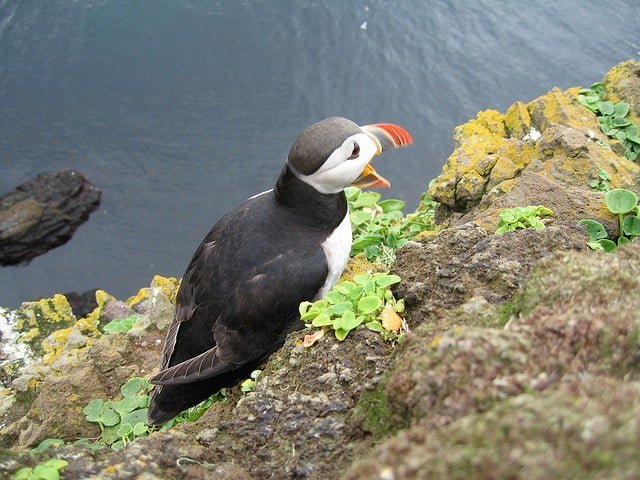Iceland Flutters with Birds of the Land, Sea, and Air
Iceland has trees, though not many. Ninety-five percent of the forests that once covered the country were felled for lumber before the Twentieth Century. Only one percent remained in 1950, so its a wonder birds live in Iceland at all, but they do.
More than 300 species of bird either reside in or migrate to Iceland over the course of four seasons. Some of the birds are unique, some are well known, some breed in large numbers, and some are on the endangered list. One-third of them only pass through Iceland, on their way to somewhere else. All the birds that nest permanently and seasonally in the land of fire and ice feather Iceland in a birdwatching extravaganza, especially during late May and through June.
Seabirds are the most prevalent birds in Iceland. Puffin, black guillermot, northern fulmar, and the kittiwake nest by the millions in the cliffs along Icelands ample coastline, from the east and west fjords, and upon the rocks of Vestmannaeyjar (Westmann Islands), and the island of Grímsey. The puffin breeds in numbers so large that people hunt them for food and sport during a designated, annual hunting season. Brave climbers rappel the cliffs to harvest puffin eggs.
Other seabirds include the storm petrel and Leach's petrel, Manx sheerwater, cormorant, shag, and the great skua. Many gulls frequent all parts of Iceland, including the common gull, black-headed gull, great black-backed gull, lesser black-backed gull, herring gull, and the glaucous gull. The Brünnich's guillemot and the razorbill also breed in significant numbers along the coastline. Arctic terns arrive in Iceland every spring from Antarctica, 17,000 km (10,500 mi) away.
Other common birds include the golden and ringed plovers, the meadow pipit, wren, Brent goose, redshank, whimbrel, sandpipers, snipe, and mallard. The most common duck is the eider, which prefers the ocean, but also breeds in large numbers at Lake Mývatn, a beautiful haven for many of Icelands ducks.
Many of Icelands birds are protected by regulations which keep secret the location of the breeding grounds of the species, and which require special permits to visit certain breeding areas. Among these particular birds are the little auk, the gannet, and the white-tailed eagle, one of Icelands few taloned birds.
The gyr falcon is another of Icelands birds of prey, and is found anywhere there is a population of ptarmigan (grouse), the falcons preferred food. The merlin, however, is more prevalent than the larger gyr falcon, and is native to Iceland. It, too, survives by preying upon other birds, such as redwings, pipits, and wheatears.
And of course there is the raven, the chosen bird of Odin, the one-eyed leader of the Norse gods. It is said ravens foretell the future, and serve as harbingers of death when perched upon a windowsill. The sleek black bird is important enough to Icelandic culture that farmers often feed their resident ravens.
Geologically, the land of fire and ice is relatively new to the world, is only 23 million years old. Compared by age to the rest of the planet and because of its isolation in the North Atlantic Iceland is only getting started. Most likely, it still has centuries to go before the land is zoologically established. Over time, Iceland will acquire more species of birds. It has already, particularly due to a decades-old reforestation project, which is still underway today.
With nine locations all across Iceland, Berjaya Hotels can keep you cozy and comfortable anywhere you want to go birdwatching. Pick a spot, north, east, west, or south, and well help you experience a world of amazing natural wonder.
You might also enjoy:






